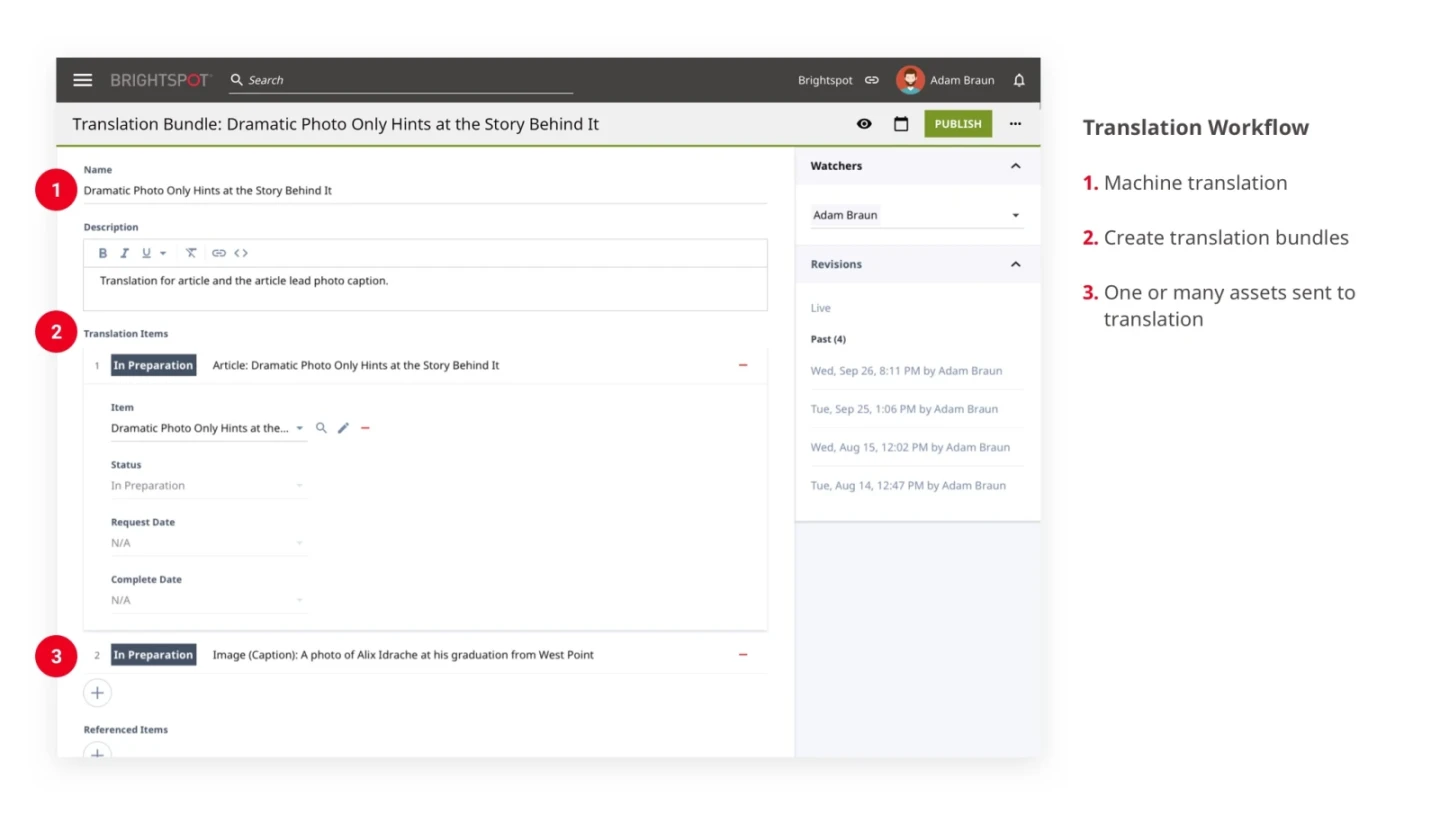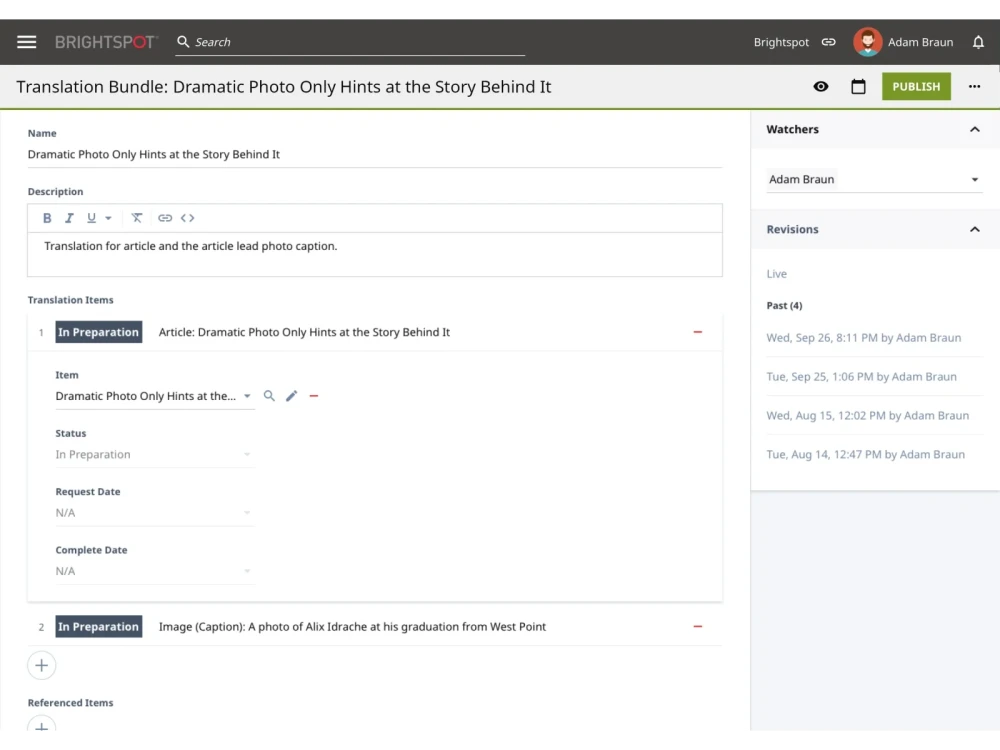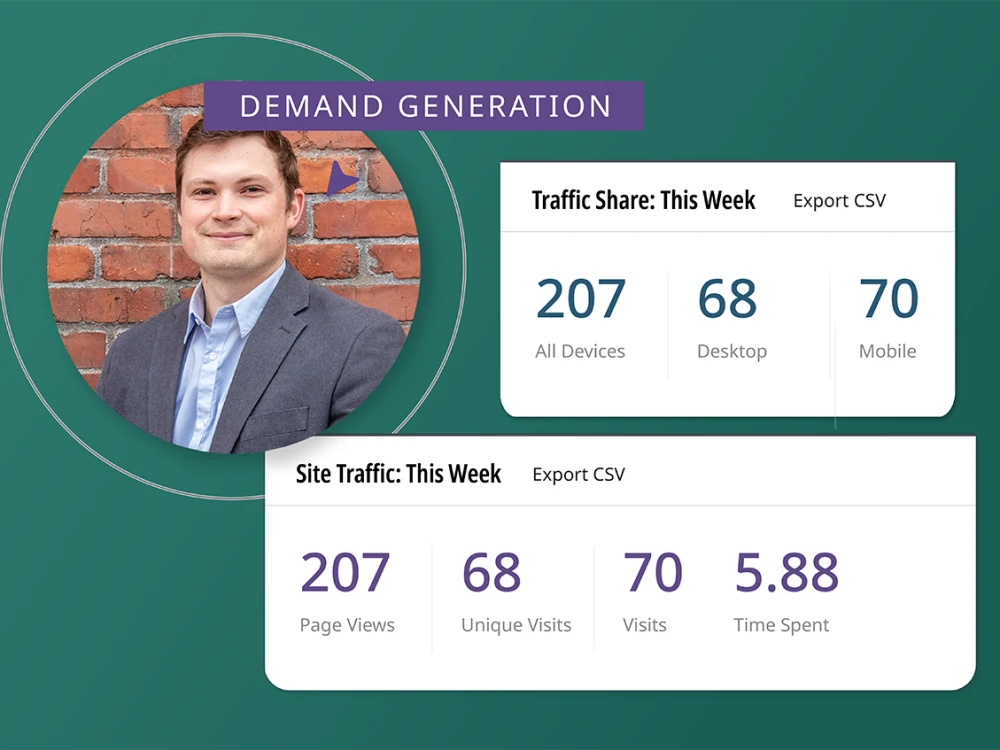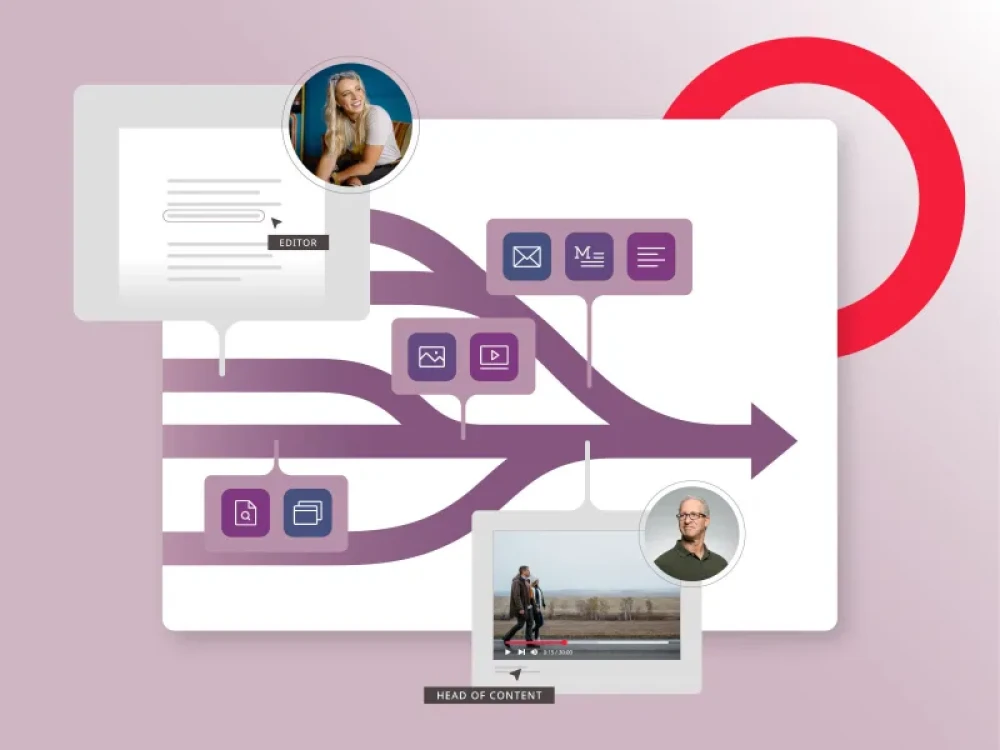Publishing has gone global, and regardless of a publisher’s industry, being able to communicate via multiple languages is essential. What’s more, keeping that messaging consistent across languages and locations is also business critical.
Here are a few examples of this business need, as it applies to several industries that Brightspot commonly serves:
While creating multilingual content is crucial, it’s also potentially time-consuming, which can significantly tax editorial teams. Enter Brightspot Translations, which attempts to carry some of that weight for editors.
Let’s consider the Brightspot workflow when it comes to a single asset—in this case, an article. To begin the translation process, an editor simply selects a source piece of published content. Note that Brightspot can support translating from any source locale, so your writers are not limited to writing in English.
In just a few clicks, the content you’ve selected can be instantaneously translated to French, German, Portuguese, Spanish, Swedish or another language. An editor can then review the draft translation and make any needed changes before publishing.
When it comes to the actual method of translation, our customers have several choices:
Once content has been translated, editors have the ability to view diffs and data comparisons between sourced content and any translations of that content. More critical, Brightspot maintains relationships between the original source content and any translated versions, allowing for easy access to versions. Brightspot also notifies editors when source content has changed, to indicate that it may need to be given an additional translation workflow. Edits can be made in this view for better context.
To make content creation more efficient, editorial teams can identify any piece of content with a locale. This will help with translation workflows to translate content appropriately.
We know that publishing content in the digital era means talking to global audiences, and reaching those audiences in their own language is an essential step in connecting with them in an authentic way. Thanks to Brightspot’s powerful translation feature, editorial teams can quickly and efficiently create and disperse content to a global readership.
- For companies focused on brand storytelling, audiences and customers are often global, meaning that content, messaging and delivery must be localized to communicate the brand story effectively.
- For companies building intranets, it’s the global workforce that matters. After all, your employees in Dallas are just as important to your organizational success as the ones in Paris.
- For media companies, the opportunity to expose users to content (and advertising) isn’t limited to just the United States; in many ways, news is now global, and publishing those messages in multiple languages only benefits the storytellers.
- For educational institutions, students are also global, so many universities need to customize their websites to communicate effectively with potential applicants and current students around the world.
- Manual: Manual translation would be done by a CMS editor; meaning, a human being must review the content and write the translated version. For smaller publishers who are focused on one or two locales, this approach works well.
- Automatic: Automatic translation delegates to a third-party service. There’s no shortage of businesses that offer automatic translations, and we offer built-in integrations with Google Translate and AWS Translate, plus we can support most other third-parties, including World Server and others.
Thanks to the rapid proliferation of tech in recent years, the world is now more connected than ever, and brands are looking to expand their global reach by delivering localized experiences to increasingly diverse audiences. A vital component of any localization strategy is the ability to translate content into different languages accurately and efficiently. Though translations seem relatively straightforward on the surface, brands are often surprised at how complicated the process can be.
Here, are five key features a CMS needs to help brands successfully deliver translated content in the digital era.
- Multilingual site structure: When publishing content for a global audience, companies need to think beyond the content itself. In addition to providing accurate translations, a business needs to ensure that the architecture of its site will provide a cohesive experience for front-end users. After a user enters the site in one language, the pages of that site should remain in that language unless the user manually selects a different one. Though some sites use cookies and dynamic language detection to localize content on a page, this method can create an inconsistent experience across the site and can prevent a site from being properly indexed. The better practice is to use your CMS to generate a unique URL for each piece of translated content.
- Translation integrations: To maximize efficiency, a CMS should streamline the translation process by integrating directly with the company’s translation provider. This eliminates the need to manually export or copy and paste source content into a separate system to be translated, saving publishers time and effort. Once translations are complete, a good CMS will automatically import translations back into the workflow. In addition to making the translation process easier, the connection between the CMS and the translation service also provides for increased security when compared with exporting and sending content externally. We can
- Customized workflows: Every company’s content publishing process looks different, and an effective CMS empowers teams to create business-specific workflows to suit their unique needs. This allows publishers to send content for translation at the point that makes the most sense for their business. Oftentimes, translation occurs toward the end of the publishing workflow in order to minimize the costs associated with having to repeatedly re-translate content due to edits.
- In-context translation: Creating accurate translations requires a nuanced understanding of the respective language. Though a number of older CMSs may have the ability to send copy to translation providers, a good CMS takes this a step further by sending context for the copy as well. For example, if content on a page is referencing a specific image, in-context translation will include that image with the text that needs translating. This helps to ensure that the meaning of a brand’s messaging is translated correctly and reduces the time publishers spend trying to clarify content to translators.
- Considerations for SEO: SEO is an important consideration for companies as they publish content in multiple languages. As discussed above, unique URLs for translated content helps users navigate your site, but they also help you avoid being penalized for creating duplicate content. To organize and publish these pages correctly on a site, it’s vital that a company be able to connect source content to its related translations. A good CMS will automatically track and connect a piece of source content to all of its translations so that a publisher can focus on optimizing SEO performance without having to worry about being penalized for duplicate content.





